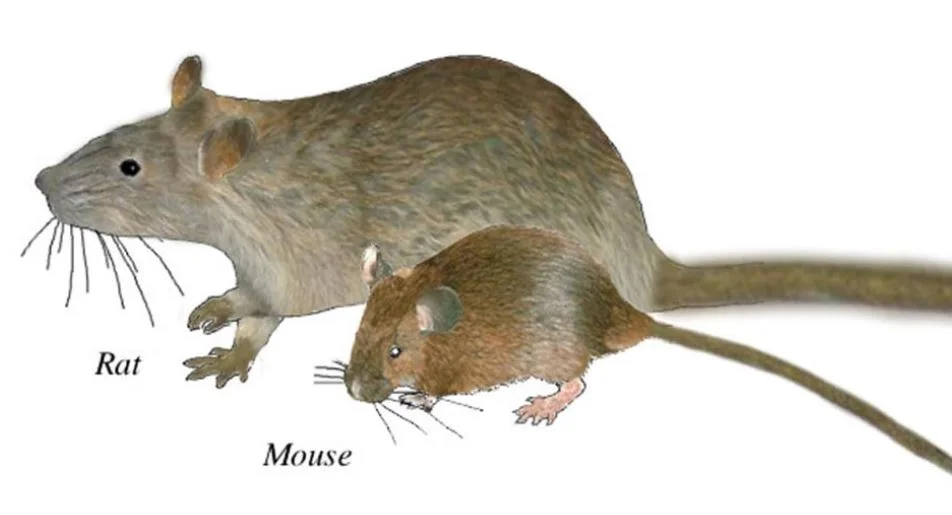Mice & Rats: Evidence and Treatment
There are two main species of rats in the US, the Roof Rat and the Norway Rat. The Roof Rat is more common in warm areas, and more likely to enter the attic. Norway Rats tend to stick to the ground and the sewers and basements, in their stomping grounds up north. House Mice live everywhere, and they also commonly go inside attics. Rats and mice are commensal rodents, which means that they associate themselves with people, not the wild.
EVIDENCE LEFT BEHIND: Rats leave a ton of droppings, sometimes tens of thousands of droppings in an attic - they look like 1/3 inch brown thick grains of rice, very similar to squirrel droppings. They also leave tunnels and trailways in the insulation. They also leave chew marks, and interestingly, they leave brown smudges from grease in their fur, and this lines the commonly travelled rat routes. You might see chew marks, on pipe insulation, wood, or electrical wires.
The first and most crucial thing is to inspect the house and find all possible entry holes, and before starting any trapping, carry out repairs and seal the attic so the rats can't get in again. Also, carry out a visual examination of the attic to find the holes they were using to get in and out of the attic. These can be identified by the brown smudges of grease that comes from the rat's fur, and should all be sealed to prevent future rat infestations in the attic.


